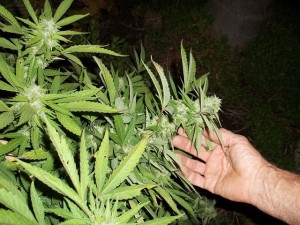The relationship between cannabis and the brain is a complex and huge subject. Identifying the various ways cannabis consumption affects the brain is just a small step, yet scientist have only begin to unravel many of the mysteries. Most perplexingly, a lot of the evidence out there is contradictory.
On the one hand, we’re led to believe that cannabis impairs a user’s cognitive function – especially short-term memory. The other hand, we hear cannabis can act as a neuroprotectant, maybe even preventing the onset of neurodegenerative diseases.
Cannabis is a diverse, complex plant comprised of hundreds of chemicals. Two of these chemicals – THC and CBD – affect us in significantly different ways.
Cannabis contains at least 85 cannabinoids, the chemical compounds that interact with the brain’s receptors. The most-famous and well known cannabinoids are THC and CBD.
THC, as we all know, is responsible for most of cannabis’ psychoactive effects. It affects the brain by activating cannabinoids receptors, namely CB1. THC promotes creativity, amplifies your thoughts, and keeps you focuses… Until stimuli distracts you to a tangential thought.
Surprisingly, CBD, THC’s non-psychoactive sibling, shows affinity to bind to either CB1 or CB2. Instead, CBD seems to indirectly stimulate cannabinoid signaling by suppressing the enzyme that breaks down anandamide. This partially explains why CBD appears to combat some effects of THC, and why higher CBD concentrations result in fewer intoxicating effects.
The Biphasic Effect: Why Proper THC Dosage is Important
The effect of cannabis vary by individual and are highly dependent on dosing and the form of preparation. It’s important to note that many cannabinoids – THC in particular – have a biphasic effect. This means that low and high doses can have opposite effect in users. This partly explains why many users feel relaxed with low doses and paranoid under high doses. Most medical practitioners advise patients to start off with a low dosage and gradually increase it as the patient determines how their body reacts. This process is known as “self-titration.”
Another way to to think of the biphasic effect is a therapeutic window. Cannabis has a narrow therapeutic range. The difference between the optimal dosage that gives the effect you want versus a dosage that creates adverse effects can be very subtle. Chronic pain is one such example where low to medium dosages relieve it, while high dosages amplifies it.
Further complicating the issue is that THC and CBD levels – as well as the ratios between them – can vary dramatically from strain to strain. It’s important for people to be conscious of these levels as they find the most appropriate dosage to treat their condition.
The same applies to lifestyle users who may find they have a preference for a particular strain. One strain may make them feel extremely sleepy or paranoid, while another might make them feel relaxed and euphoric. Everyone’s body chemistry is different, hence, cannabis will affect each one differently.
Optimal Dosing: Low to Moderate
- Elevated mood, feelings of euphoria, and relaxation.
- Sleepiness (higher CBD concentrations can counteract it).
- Increase in creativity
- Pain Relief
- Alleviating nausea
- Appetite stimulation
Suboptimal Dosing: High
- Hallucinations varying from mild to moderate
- Paranoia
- Anxiety
- Disorientation
- Heightened pain sensitivity
Refocusing on the topic of this article, why is there so much contradictory or paradoxical evidence on how marijuana affects the brain?
Dr. Mike Hart, head physician at Marijuana for Trauma, offers an explanation:
“Frustratingly, we have very few high-quality human studies that examine the potential long-term benefits or negative effects of cannabis consumption on the brain. But, just like cannabis has biphasic acute effects, the same may hold true in long-term usage,” says Dr. Hart. “Too much, too often, over a long period of time, could cause negative effects like diminished verbal memory recall; while the right amount and right frequency could elicit the benefits we’ve found in early studies on animal models, such as neuroprotection and the slowing or prevention of neurodegenerative disease.”



